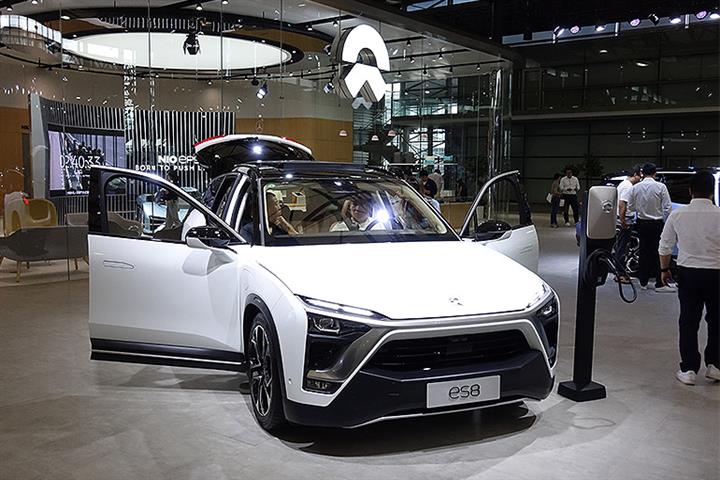 Nio Car Driver’s Death Sparks ‘Auto Pilot’ Concerns in China
Nio Car Driver’s Death Sparks ‘Auto Pilot’ Concerns in China(Yicai Global) Aug. 16 -- A man’s fatal car accident while driving in a Nio vehicle’s ‘navigate on pilot’ mode has ignited concerns in China about autonomous driving features.
Lin Wenqin’s Nio ES8 was involved in a traffic accident in Fujian province on Aug. 12, killing the 31-year-old founder of catering brand Management firm Meiyihao, the company announced via WeChat two days later.
The vehicle’s maker, Shanghai-based Nio, said it is is cooperating with the police investigation and pointed out that the ‘navigate on pilot’ mode is not an autopilot function.
The user’s guide on Nio’s mobile app says NOP is an in-depth integration of the navigation system, high-precision maps and auto-driving assistance system Nio Pilot that enables vehicles to change lanes and switch to the next highway or overpass based on routes planned by the navigation system within areas covered by the maps.
“We have to emphasize that our users should not regard the NOP as the autonomous driving function, as it is still a driving assistance function just like Nio Pilot, which can deactivate at any time when the corresponding working conditions cannot be met,” Zhang Jianyong, head of Nio’s driverless systems engineering department, said in the guide released last August.
As yet there is not exact definition of ‘autonomous driving.’ The international community has not set a standard definition. Companies tend to take advantage of this, making impracticable commitments so as to push their own advanced technologies, an industry insider told Yicai Global. It can be very dangerous if drivers confuse driving assistance systems with self-driving functions, he added.
Last July, a court in Munich, Germany, banned Tesla from using words such as ‘Autopilot’ and ‘full self driving’ as they mislead consumers into thinking that their vehicles can drive completely autonomously.
“Chinese carmakers also have a similar tendency to lure customers with futuristic functions and high configurations during advertising,” an executive in charge of smart traffic business at a big Chinese internet firm told Yicai Global. “It is a different matter when the car is actually delivered. This method easily fails when the 'automatic driving' function is used.”
China’s Ministry of Industry and Information Technology issued a document on Aug. 12 to regulate such new technology, calling on automakers to strengthen the safety management of products featuring self-driving functions, and ensure that the vehicles meet the requirements on safety, risk control and judgment of liabilities.
Editor: Futura Costaglione